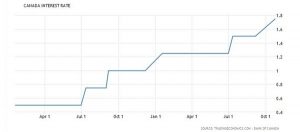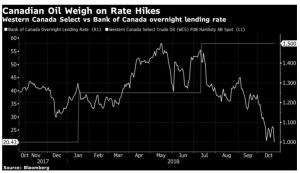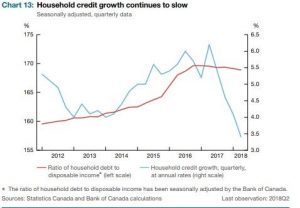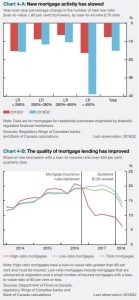How will you ensure your real estate business prospers in tough times? What are you doing to adjust your business to our new economic realities?
Here are my practices, built on what I learned in 44 years in business, and as published in REIN Life magazine here http://magazine.reincanada.com/2016_Issue1/ on pages 33 & 34.
1) Keep a balanced view: take your view from the 10,000 foot level (get out of the forest and above the trees). Don’t be pulled back and forth by the daily news headlines. Do read beyond the headlines; remember that the last paragraph sums up the true story much better than the headline does. The headline’s role is to entice you to read the story. Pay attention to the longer term trends and statistics – they will keep you balanced and help you to make better decisions. Pay attention to both the positive and the negative things that are happening around you. Be realistic as you evaluate of what is going on. Be positive but don’t be mistaken for Pollyanna. A positive mindset is a powerful ally in getting things done, but must be accompanied by a realistic view on things to allow you to focus on that which is achievable.
2) Analyze your business: What are you doing well and what not so well? What can you improve on? What must you improve on? Review your Real Estate portfolio’s financial performance versus your budget. If you don’t yet have a budget then create one now. Measure what is significant so you will know what areas to put your time, effort and money into. Know your true numbers (for each property and your whole portfolio) – if you don’t you are not really managing your business, and that means you have put it at risk. Always know your current cash position and your projected monthly cash-flow going forward – if you don’t you risk running out of cash. Maintain sizeable cash reserves, and/or credit facilities. Positive cash-flow is critically important, and cash reserves will get you through the tough patches.
3) Review your business plan: both the short term and the long term, and adjust it as prudent investors should when the world you operate in changes big time. Be proactive. Don’t be buffeted by the changing seas. Don’t allow yourself to drift. Chart your course and make corrections as needed to keep your business on course.
4) Involve your team and other experts in this process. They are on your team for a reason. Get their input. Ask for their advice. Involve people you respect for their knowledge and experience. Most of your best ideas will come out of those discussions – both your ideas and theirs. And you will awake with eureka moments in the wee hours of the morning. That’s a good thing. It means you have engaged your subconscious mind.
5) Take a break. Get away and relax. Read some books, go sailing, walking, running, diving, flying, driving – whatever works for you. If you take the right amount of time, all that you have done so far in this process will distil in your mind and you will find clarity.
6) Now act to recession-protect your business. A few examples:
First, determine your cash-flow position, and if negative, by how much. In other words, what is Your Burn Rate? Are you cash-flow positive or break-even, or negative? If negative, what is your Burn Rate? The term essentially means ‘by how much does your cash outflows exceed your inflows?’ For this exercise I recommend you assume all spending is not funded by lines of credit or credit cards etc. So do your monthly or annual budget in this manner to determine if you have a ‘burn’ or not. And if you do, you need to act to minimize the burn rate as best you can. Cut spending, increase income if you can, look for debt payment deferrals, and if that is not enough, then look to other debt instruments to help or sell assets.
- Extend amortization periods on those of your mortgages with shorter amortizations. Most lenders will do this without cost (or a very small processing fee). This can make for significant reductions in monthly payments. And once things improve you can always shorten the amortization periods again.
- Look for ways to increase revenues: provide cable TV, internet, other services, add rental units to your properties (suites, garages, parking spaces, coin-op laundry facilities, etc).
- Act pro-actively to decrease vacancies. Be creative in your advertising, write excellent ad copy, advertise online, in the neighbourhood and at the property itself. Offer incentives to fill vacant units, preferably one-time incentives so you preserve good cash-flow.
- Create new lines of credit where you have equity to provide a cash reserve you can draw on when needed. This could be utilized to fund unexpected costs or to purchase a great new property.
- Sell properties that simply won’t perform and those where the return on your equity is poor and cannot be improved. Then re-deploy that cash into good solid cash-flowing assets, or to reduce other debts.
- Set expectations for your team and clearly communicate them to each. Then regularly measure and report back to them their performance as against those expectations. Celebrate their successes and address how shortcomings will be improved. If a member just isn’t getting it done – fire and replace them.
- Continue to make decisions that fit with your long-term objectives. Don’t take the easy or quick solution as those often cost more in the long run and tend to move you further away from your goals rather than towards them.
7) Do the same for your personal life. Your family’s business also needs your attention. Treat your personal finances much like your business finances. If your personal financial health is good you will reduce financial pressures that often make for poor decision-making.
8) Review and repeat. Review what you did to determine how to do it better next time. Do this all again at least once a year. In these times maybe twice a year is more prudent.
9) Share what you have learned. This will help to make others’ businesses better as was yours. Much more will come back to you than you put out there, including many good ideas from others that you can employ yourself.
We have been managing our Real Estate business like this since we began in the business in 2002. The process ensures we stay on top of our business and continue to improve its performance year after year.
To your success,
Garth





